4.1 Growth Patterns and Inflorescences
Learning objectives
By the end of this lesson you will be able to:
- Recognize the general patterns of plant growth and the diversity of flowers found in angiosperms.
- Recognize the two types of growth patterns found in angiosperms — indeterminate and determinate.
- Identify the names of parts of simple and compound inflorescences.
- Recognize the diversity of arrangements of these parts.
Vegetative and reproductive growth patterns
Annual plants are produced from seed in the spring and die at the end of the growing season. These plants typically have a vegetative phase early in their lifespan, followed by a reproductive phase.
During the vegetative phase, stem growth takes place through the addition of new cells — including new nodes and internodes — by the apical meristem (the growing point or bud at the tip of the stem) and through elongation of those new cells. Leaves and branches then emerge at the nodes.
Eventually, and typically at very specific and predictable times, hormonal signals within the plant that are triggered by external agents such as night length or sustained temperatures stimulate the formation of reproductive buds or meristems at nodes. These reproductive meristems give rise to inflorescences. The appearance of these inflorescences signals the transition of the plant from vegetative to reproductive stages.
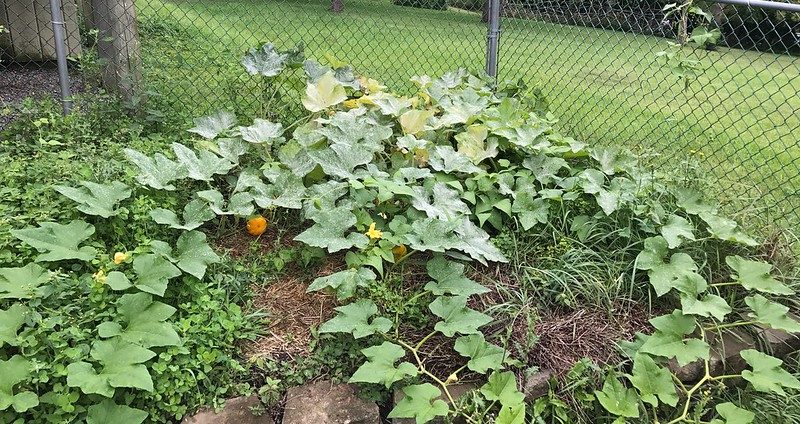
Determinate growth
Watch this video on determinate and indeterminate growth patterns (0:52)
In some plants, the apical meristem itself transforms into a reproductive meristem and produces an inflorescence at the end of the stem, called a terminal inflorescence. This determinate growth is beneficial in ornamental plants because it places flowers at the ends of the stems and branches, where they are clearly displayed and showy. Next time you walk past a bed of flowering plants, look at where the flowers are held on the plant. In most cases, they will be at the tip of the stems and branches and positioned on the outer periphery of the plant.
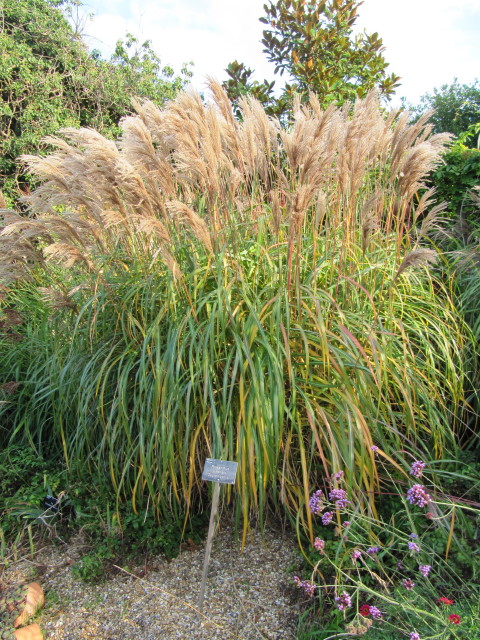
Determinate plants are also popular in agriculture because the plant produces all or most of its flowers at about the same time. The fruits ripen synchronously and can be harvested during a narrow window of time rather than ripening at various times during the season, which would stretch harvest out over many weeks. Corn is an obvious example, with the tassel at the top of the plant being a terminal male inflorescence and the corn ear a terminal female inflorescence. This type of growth pattern is called determinate because once the apical meristem of the plant transforms into a reproductive meristem, the number of nodes on that stem has been determined and will not increase. The stem may increase a bit in length through the elongation of the cells in the internodes, but no additional nodes will be formed.
Indeterminate growth
In other plants, the apical meristem remains a vegetative meristem that is capable of forming new nodes and internodes throughout the season. Once the hormonal signals are right, reproductive axillary meristems at the nodes below the apical meristem produce inflorescences. Even though the reproductive phase has begun, the plant can still grow new nodes and internodes from the apical meristems on stem and branches. As the season progresses and as new nodes are formed by the apical meristem, these nodes also mature to support the formation of more reproductive meristems and the growth of inflorescences.
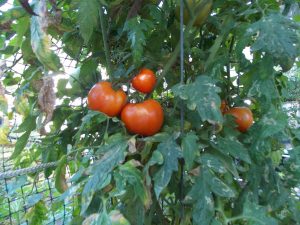
This type of growth is called indeterminate since the number of nodes on the stem and branches is not determined, and more can be added throughout the year. For ornamental plants, indeterminate growth can mean highly desirable season-long flowering by an individual plant. For food plants, it means that fruits ripen at different times and so are available for a longer period of time through the year (many tomato cultivars are indeterminate). This may not be favored in large agricultural operations where the preference is for the efficiency of one simultaneous and large harvest, but it is great for gardeners who like small amounts of their produce to ripen throughout the season.
Watch this video to see examples of determinate and indeterminate plants (2:48)
Watch this video about how determinate and indeterminate growth patterns impact edible plants (1:07)
Inflorescences
The inflorescence is the flowering structure of the plant. Some inflorescences are very simple and support only one flower. These are called solitary or sole flower inflorescences, and the stalk attaching the flower to the node from which it grew is called the peduncle.
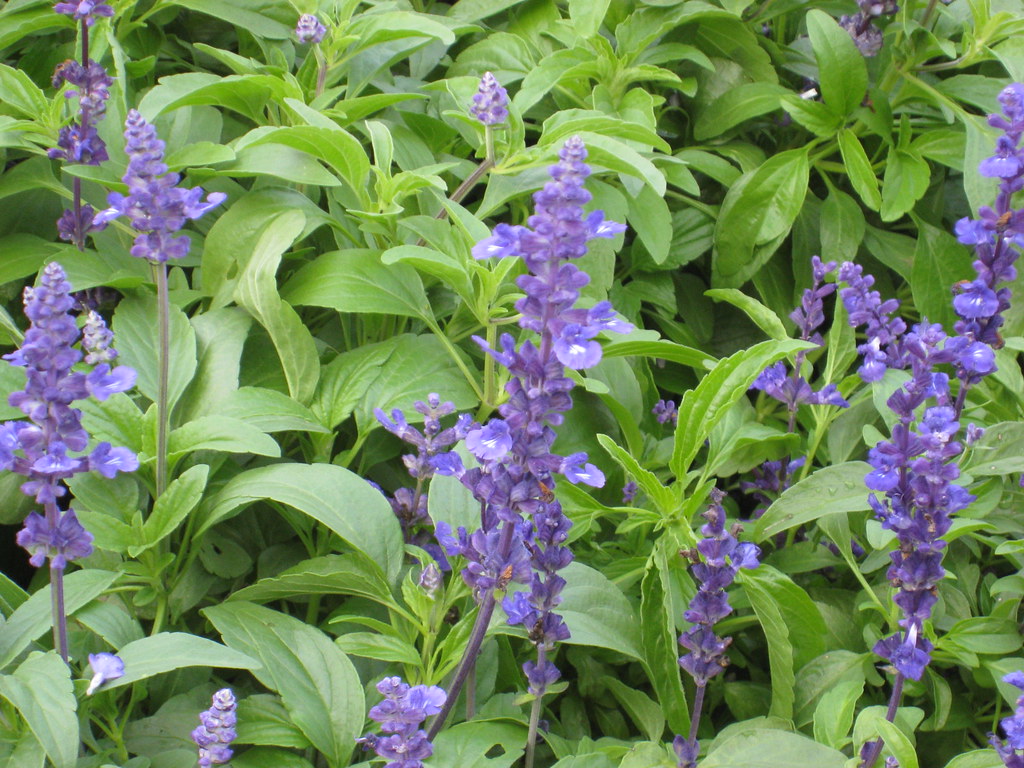
Other inflorescences can support multiple flowers and display complex branching patterns.
The drawing to the right depicts a hypothetical inflorescence that supports multiple flowers. Toward the bottom are the last two nodes of the stem. The next-to-last node supports a leaf, and the terminal node supports an inflorescence and a leaf. Since that leaf is associated with the inflorescence, rather than emerging from a stem node, botanists call it a “bract,” even though it may look like a smaller version of the plant’s other leaves. Since the terminal node transforms to be reproductive, this plant must have determinate growth.
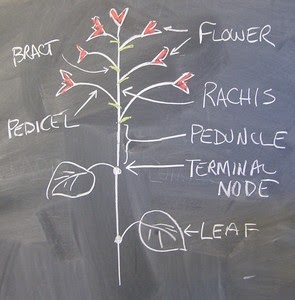
The stem-like part of the inflorescence between the point where it emerges from the terminal node of the stem and the point where the branches of the inflorescence begin is called the peduncle. The central axis of the inflorescence, starting at the point where the first inflorescence branch is attached, is called the rachis. The rachis may subdivide one or more times, and these subdivisions are considered part of the rachis. Finally, there is a short stalk connecting the flower to the rachis; this is called the pedicel.
This type of inflorescence, with peduncle, pedicel, and single-flower structure, is called a simple inflorescence. An inflorescence with a group of flowers is called a compound inflorescence. A type of compound inflorescence with multiple flowers originating from a common point is an umbel. The illustration below shows a simple umbel compared to a compound umbel. On the left, in the simple umbel, the pedicels radiate out from a central point at the end of the peduncle and attach to a single flower. On the right, in the compound umbel, rachi radiate out from the end of the peduncle, and an umbel is attached to the end of the rachis.
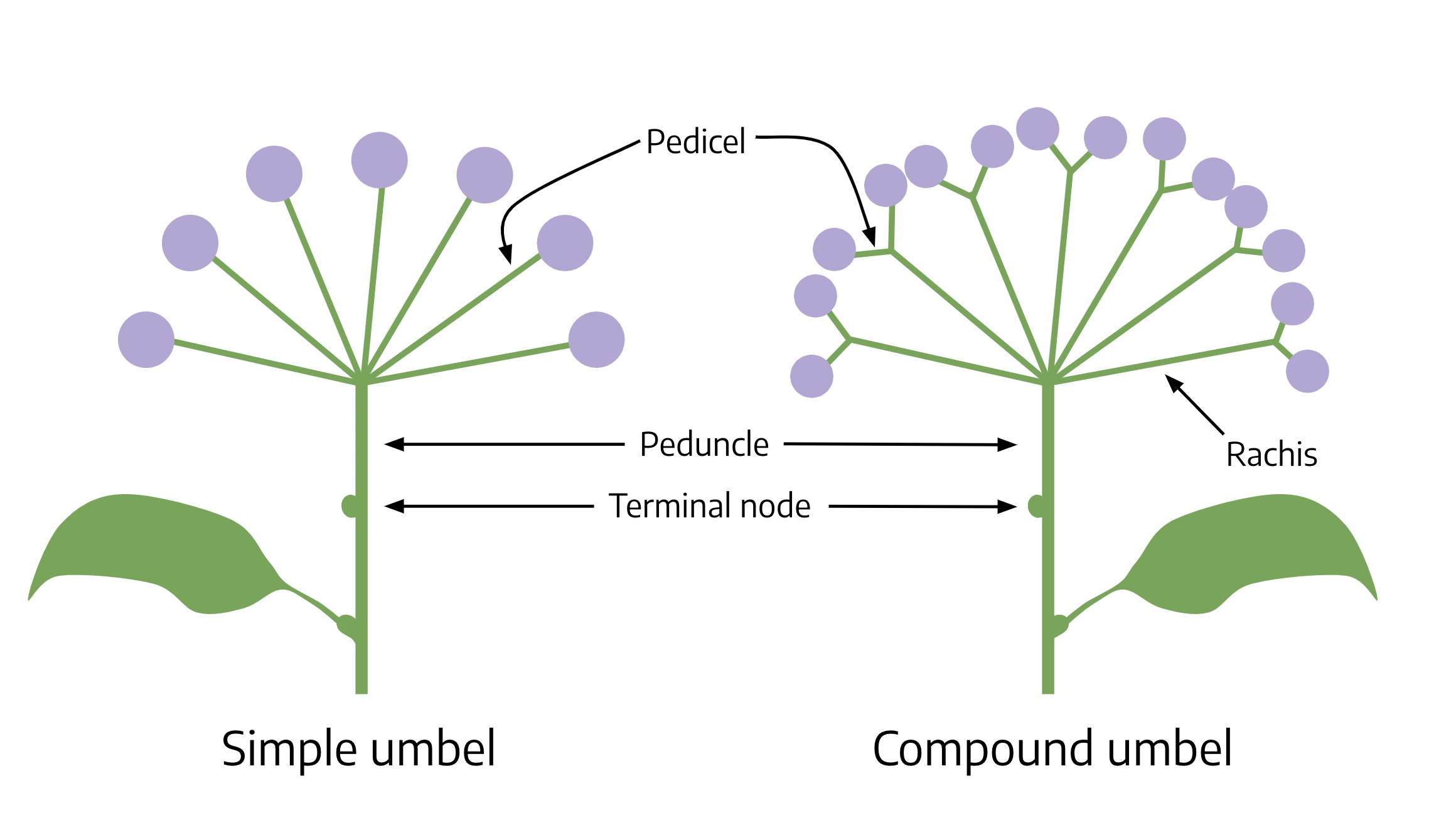
Inflorescences can be amazingly complex structures. This site about inflorescences will help you recognize some of the possible arrangements and perhaps start looking for this complexity when you are out among plants.
Watch this video about flower structures (3:15)
Watch this video on flower structures that are a little harder to figure out (1:49)
Review questions
- Explain the difference between determinate and indeterminate growth.
- Draw a simple inflorescence and label the peduncle, pedicel, and flower(s).
- Describe the differences between a bract and a leaf.
Plant that is produced from seed in the spring and dies at the end of the growing season.
Apical meristem that transforms into the reproductive tissues (the inflorescence) of the plant.
Complete flower structure of a plant and includes the flower, pedicle, rachis, and peduncle.
When the stem of a plant terminates in a flowering stalk and new stem growth continues from subterminal lateral buds.
Reproductive structure in a flowering plant.
When the apical meristem remains a vegetative meristem that is capable of forming new nodes and internodes throughout the season. Once the hormonal signals are right, reproductive axillary meristems at the nodes below the apical meristem produce inflorescences.
Large, central stalk that attaches the rachi to the stem of the plant.
Stalk of a flower that is situated between the peduncle and the pedicel.
Short stalk that holds up the flower.
Type of inflorescence with a peduncle, rachis, pedicel, and single flower structure.
Inflorescence with a group of flowers and includes a rachis.

